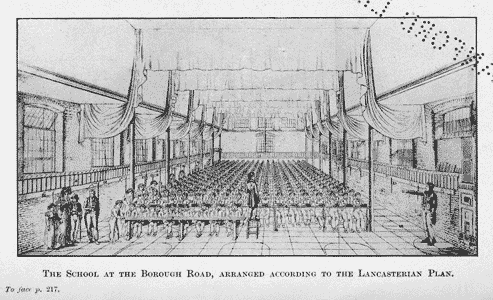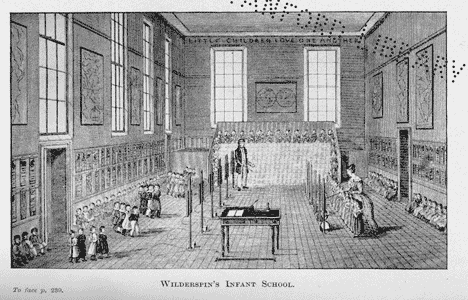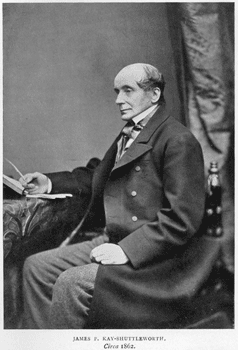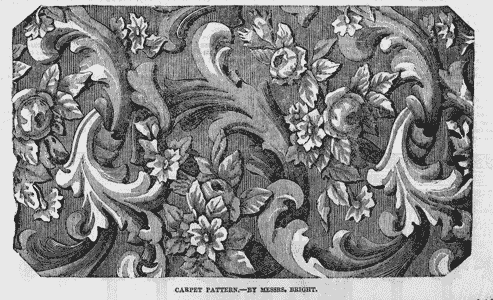|

NOTES ON ISSUE 1: HISTORICAL GLOSSARY
PART 1 OF 4
Printable View
Now, what I want
is Facts. Teach these boys and girls nothing but Facts. Facts
alone are wanted in life. Plant nothing else, and root out everything
else. You can only form the minds of reasoning animals upon
Facts: nothing else will ever be of any service to them. This
is the principle on which I bring up my own children, and this
is the principle on which I bring up these children. Stick to
Facts, sir!
The scene was a plain, bare, monotonous vault of a school-room…
In the opening passage of Hard Times, we meet one of its central characters, Mr. Gradgrind, and hear his own description of his philosophy, as applied to child-rearing and education. Gradgrind's emphasis on "nothing but Facts" signals his adherence to Utilitarianism, which is a major target for Dickens in Hard Times. Nineteenth-century Utilitarian thinkers, the best known of whom was Jeremy Bentham (1748-1832), privileged empiricism and reason, focusing on quantifying human behavior to produce "the greatest good for the greatest number." The character of Thomas Gradgrind takes these tendencies to an extreme. In the school he sponsors, he prohibits all speculation, fancy, and play, and the driest of lessons are given to the pupils.
In the period before the 1854 composition of Hard Times, Victorian society struggled with the question of how to provide comprehensive elementary education to all children. Private schools such as Gradgrind's were common. Early plans for widespread education, undertaken without government sponsorship, resulted in competing plans such as the Lancasterian schools, run on the monitorial system, and Samuel Wilderspin's infant schools, which emphasized play and freedom for young children. The Lancasterian system had a strong influence on later nineteenth-century education. A classroom that strongly resembles the "plain, bare, monotonous vault of a school-room" that Dickens describes in the passage above is pictured below:

This illustration, "The School at Borough Road, Arranged
According to the Lancasterian Plan," from C. Birchenough's History
of Elementary Education in England and Wales from 1800 to the
Present Day (1914).
Samuel Wilderspin's infant schools, on the other hand, were a freer, more playful environment, as shown in this very different illustration from Birchenough's History of Elementary Education:

In 1846—eight years before Dickens wrote Hard Times—the
British government assumed a more active role in education.
Sir James Kay-Shuttleworth (1804-77), a Utilitarian educator
in Manchester, proposed and became the director of a new government-supported
system that emphasized factual education and standardized teacher
training. The principles described in the opening of Hard
Times may be modeled to some degree on Kay-Shuttleworth's
work. Although Dickens admired some of Kay-Shuttleworth's achievements,
he disliked his emphasis on Utilitarian education.

This 1862 portrait of James Kay-Shuttleworth
is taken from Frank Smith's Life and Work of Sir James Kay-Shuttleworth
(1923).
with a system to force down the
general throat like a bolus…
A bolus is a large pill.
To continue in fistic phraseology,
he had a genius for coming up to the scratch
Before the Queensberry Rules were introduced
in 1867, boxing was conducted bare-knuckled, according to the
London rules. The "scratch" was a line drawn in the
ring, from which the fighters started. If the fighter could
not get to the scratch without help at the beginning of each
round, he lost the fight.
He would go in and damage any subject
whatever with his right, follow up with his left, stop, exchange,
counter, bore his opponent (he always fought All England) to
the ropes, and fall upon him neatly.
All England or London rules for boxing permitted fighters to
push their opponents up against the ropes, using their own weight.
"Bore" is thus used in a double sense here, as a boxing
metaphor and in the literal sense of the "third gentleman"
making dull, boring speeches to defeat "all England"—also
used in a double sense.
You are not, Mary Jupe…
Dickens considered naming Sissy "Mary," and the inconsistency
here stands in the Household Words text. It was corrected
in later editions.
You are not to have, in any object
of use or ornament, what would be a contradiction in fact. You
don't walk upon flowers in fact; you cannot be allowed to walk
upon flowers in carpets. You don't find that foreign birds and
butterflies come and perch upon your crockery; you cannot be
permitted to paint foreign birds and butterflies upon your crockery….
This is fact. This is taste.
In these declarations on taste, Dickens
is satirizing the Department of Practical Art, established as
part of the Board of Trade in 1852, which made similar pronouncements
on the role of realism in tasteful interior design. Dickens
had no objection to using flowers and other "contradictions
in fact" in decoration—a penchant that he shared with Victorian
culture as a whole.
Despite the best Gradgrindian efforts of the Department of Practical
Art, representational decoration flourished at the time. Just
three years before Dickens wrote Hard Times, for instance,
the Great Exhibition at the Crystal Palace had afforded manufacturers
the opportunity of showing off their vast range of patterned
carpets, furniture, and other items both useful and decorative.
Engravings of some of the exhibits in the Illustrated London
News show a number of flower-patterned carpets.

This engraving of a "patent power-loom printed carpet by
Messrs. Bright and Co." appeared in the September 6, 1851, issue
of the Illustrated London News. 
This engraving of another carpet pattern,
also by Bright and Co., appeared in the August 2, 1851, issue.
|

